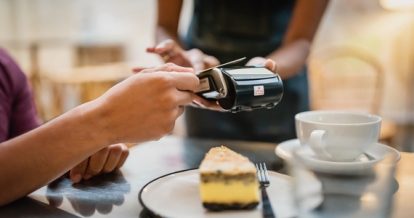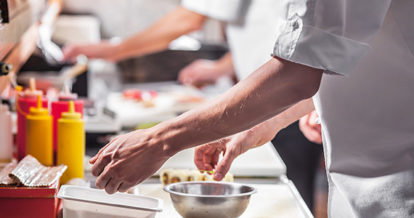Accepting card payments at your restaurant means giving customers more options, but it also means subjecting your business to possible chargebacks. Unlike cash transactions, which are settled as soon as a customer hands over their money, card transactions can be disputed, and these chargebacks can lead to some major headaches for merchants
The purpose of chargebacks is to protect consumers from fraud, and hold merchants accountable for charging the agreed-upon amount. But while this is good for consumers, chargebacks can mean fines and fees for your businesses. And with 78% of restaurants accepting credit cards and 74% accepting debit cards, chargebacks are now a universal problem for the industry.
Fortunately, there are many things you can do to prevent chargebacks. In this guide to chargebacks for restaurants, you’ll learn:
- What a chargeback is
- How chargebacks work
- Common causes of chargebacks in restaurants
- How to prevent chargebacks
- The cost of chargebacks for merchants
Disclaimer: All of the information contained in this article is for informational purposes only and does not constitute legal, accounting, tax, or other professional or compliance advice. It is your responsibility to determine whether credit card surcharging is permissible in your jurisdiction. You are solely responsible for ensuring that your activity is compliant with the card network requirements and all laws applicable to you. Non-compliance may result in regulatory consequences or fines.
What are Chargebacks?
A chargeback occurs when a credit cardholder (like your diners) disputes a transaction with their financial institution. Consumers can dispute charges for a number of reasons, like suspected fraud, an unrecognized merchant name, or dissatisfaction with a product or service.
The financial institution is responsible for investigating the disputed charge. If the investigation finds grounds for reversing the charge, those funds are taken away from the merchant (your restaurant). While the financial institution makes the ultimate decision about chargebacks, merchants can dispute these decisions by providing proof of legitimate purchases from customers.
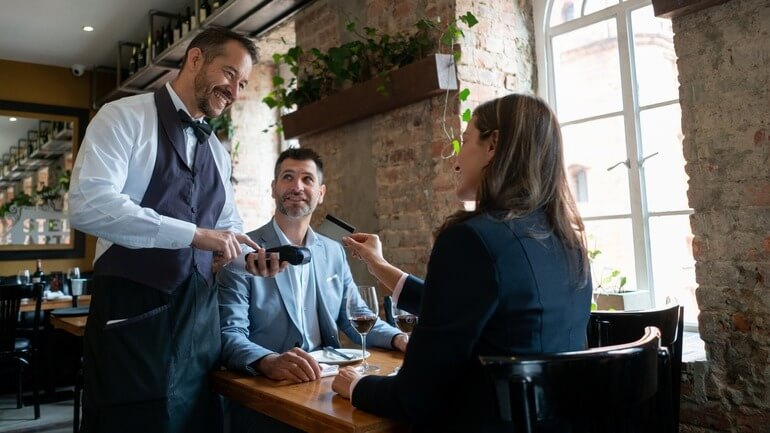
How do Chargebacks Work?
Let’s see how chargebacks work with a sample scenario. A consumer reviews their credit card statement and sees a charge that they don’t remember making, so they assume it’s fraud.
The customer calls their card issuer to report the suspicious transaction. The card company investigates the transaction by gathering evidence as to whether the transaction was indeed made by the customer and in the amount that was charged, or if there was an error or fraud at play.
Financial institutions give merchants the option to concede or fight the chargeback. If they decide to fight, they need to provide supporting evidence, such as a receipt.
If the disputed transaction warrants a chargeback, the charge will be removed from the consumer’s statement, and the chargeback fee and disputed amount are withdrawn from the merchant’s account. If the merchant fights the chargeback and wins, the transaction funds are put back in their account, but the fee for investigating the chargeback is non-refundable.
A Brief History of Chargebacks
So how did we get here?
The Fair Credit Billing Act (FCBA) was established by the Federal Trade Commission to protect consumers from unfair billing practices. The FCBA allows for chargebacks, and sets rules for scenarios in which consumers can dispute card transactions, such as for being charged for services they never received, not receiving a refund for a return, or being charged twice by accident.
Until several years ago, banks were responsible for covering any charges that were reversed due to chargebacks. However, in 2015, EMV regulations (named after the three card issuers that developed EMV chip technology: Europay, Mastercard, and Visa) shifted chargeback liability from banks to merchants.
The Purpose of Chargebacks
The purpose of chargebacks is twofold: to protect customers and to hold merchants accountable.
First and foremost, chargebacks help consumers recover from fraud. Unfortunately, credit card fraud is inevitable, and all too common. In 2020 alone, there were $266 million in fraudulent card charges. Chargebacks help consumers mitigate falling victim to fraud by reversing charges they didn’t make.
This mechanism also keeps merchants in check and disincentivizes them from taking advantage of customers by charging them more than they agree to pay, or for products or services that weren’t as expected.
How to Prevent Common Restaurant Chargebacks
While it’s clear that chargebacks serve an important role, they can also eat into your profits if you don’t take the steps to prevent them from happening in the first place.
Here’s how to prevent and reduce chargebacks that are seen the most often in the restaurant industry.
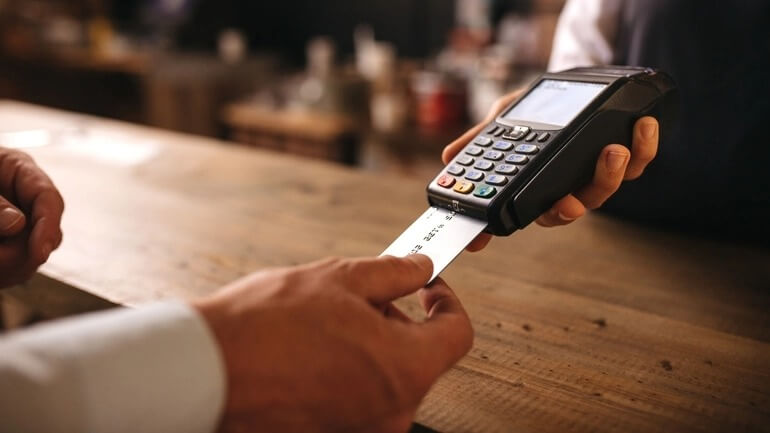
Fraudulent Transactions
In this scenario, a customer sees a charge from your business, but hasn’t visited it or made a purchase. The customer would assume the transaction is fraudulent and ask for it to be reversed.
For in-venue payments, the best way to prevent fraudulent charges is to use the most current payment technology and keep excellent records. Instead of using a credit card reader that only accepts magstripe payments, upgrade to a chip-enabled reader, which has enhanced security features. Because chips are encrypted, they’re harder for hackers to copy.
If customers still opt to swipe their cards instead of inserting their chips, make sure they sign the merchant copy of the receipt and then hold onto those receipts in case of chargeback disputes.
For online orders where cards aren’t present, prevent fraud by blocking suspicious users from placing orders, or by asking customers to present their IDs upon pick up.
Missing Orders or Pricing Issues
If a diner was charged for an item they never received, like an extra order of fries, for example, or they were overcharged for something, they may dispute the charge with their financial institution.
So, how do you prevent this kind of chargeback? Avoid missing order issues by using a restaurant POS system that integrates with your kitchen display system and ticket printer to ensure that every item a guest orders is made and delivered to the right person.
Additionally, avoid pricing-related issues by being transparent about pricing and encouraging customers to carefully review their checks. For example, if sweet potato fries cost more than regular fries, let customers know about the upcharge before they order instead of surprising them on the check.
Voids or Refunds Not Processed
In this scenario, an item that should have been voided or refunded wasn’t, and the customer isn’t very happy about it.
Avoid this conundrum by training servers on the importance of following through with voids and refunds. Also, set customers’ expectations by telling them how long it will take for a refund to go back on to their card.
If you want to be extra careful, you can even monitor the status of refunds and call the card company if it doesn’t go through when it should to prevent a chargeback.
Dissatisfaction with a Product or Service
Unfortunately for American businesses, the FCBA lets customers dispute transactions even if they weren’t fraudulent. U.S. customers can request a chargeback if they were simply unhappy with the quality of their meal or the service.
According to the FCBA, in order for customers to dispute a charge for this reason, the transaction must be for at least $50 and must have been made in their home state or 100 miles or closer to their billing address. Also, the customer must have attempted to bring up their complaint with the merchant first, and tried to have them reverse the charges or offer a way to resolve the issue before disputing the transaction with the card issuer.
Prevent a situation in which charges are forcibly reversed by taking customer complaints seriously. Offer ways to mitigate issues, such as by replacing a dish that the customer is unhappy with, taking it off the check, or offering an alternative.
Unrecognizable Business Name
Customers may dispute a legitimate charge from your restaurant if they don’t recognize the name of your business on their card statement.
If you set up your restaurant merchant services account before you finalized your restaurant’s name, or have changed its name since opening the account, it’s inevitable that customers would be confused if the business name on their statement doesn’t match where they thought they ate. For example, if you own a deli called “Bagel Heaven” but set up your merchant account when you ran a taqueria named “Joe’s Tacos” then, customers will rightfully not remember purchasing tacos if they bought bagels.
Prevent chargebacks by updating your merchant name with your payment processor if you ever change the name of your business.
Processing Errors or Authorization Issues
If an error occurs while your system processes a card payment and a customer is charged a different amount than they expected to pay, that’s grounds for a chargeback. It’s best to use an integrated payments solution that works seamlessly with your POS system to reduce double entry errors and authorization issues.
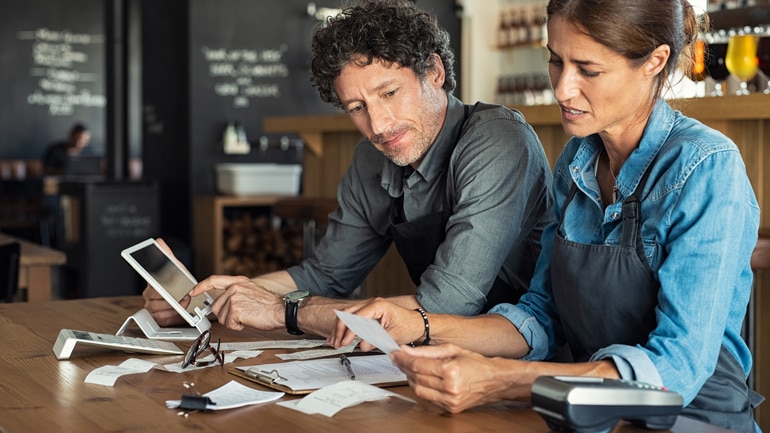
The Cost of Chargebacks for Merchants
So why are chargebacks such a big deal for restaurants and other merchants? In short, chargebacks can lead to a whole host of problems, including:
- Lost revenue: If a customer wins the chargeback dispute, your business loses that revenue. An occasional chargeback here and there isn’t a major issue, but they can become problematic when they happen often.
- Fees: Even if after an investigation the creditor finds that a customer’s transaction is legitimate, the merchant still has to pay a fee of between $15 and $100 for the administrative costs that went into the investigation. Assuming you’re charged a $15 fee for chargeback investigations, if 10 customers a month dispute valid transactions because your merchant name doesn’t match the name of your business, for example, you could be down $1,800 each year – and that’s not even including any losses from reversed transactions!
- Fines: If your restaurant faces chargeback investigations time and again, you could receive a substantial fine of up to $10,000. Read the fine print of your payment processing agreement to understand how many chargebacks would warrant a fine and what the fine would be.
- Account block: If your business continues to rack up those chargebacks – even if the transactions end up being legitimate – your merchant account can be frozen, and you may even be blocked from opening a merchant account with another creditor for several years.
As you can see, chargebacks can have significant consequences. Unfortunately, they’re on the rise for the restaurant industry. Studies have found that the restaurant industry used to have a 0.01% chargeback rate: the lowest across all sectors. Five years later, chargeback rates in the restaurant industry have increased 100-fold to between 0.5% and 1%.
This rise is linked to an increase in so-called “friendly fraud:” chargebacks that consumers request for legitimate purchases. Card-not-present transactions, which most commonly take place when a customer pays for an order online, are most vulnerable to friendly fraud. And with online ordering becoming increasingly popular, it’s no surprise that chargebacks have increased for restaurants.
Keep Customers Happy to Reduce Chargebacks
With only 16% of Americans and 20% of Canadians carrying cash at all times, restaurants have to accept card payments to survive. While card payments can make your restaurant vulnerable to the consequences of chargebacks, there’s a lot you can do to reduce chargebacks and keep customers happy at the same time.
Mitigate the risk of a chargeback by providing a great dining experience and offering to replace or comp dishes that customers have issues with. The food costs required to do so will likely cost you less than the charge reversal, investigation fee, and potential penalties. And, remember to always read the fine print of your merchant agreement and follow guidelines established by major card brands.
Learn how to save money on payment processing fees
Sign up for our free weekly TouchBistro Newsletter

